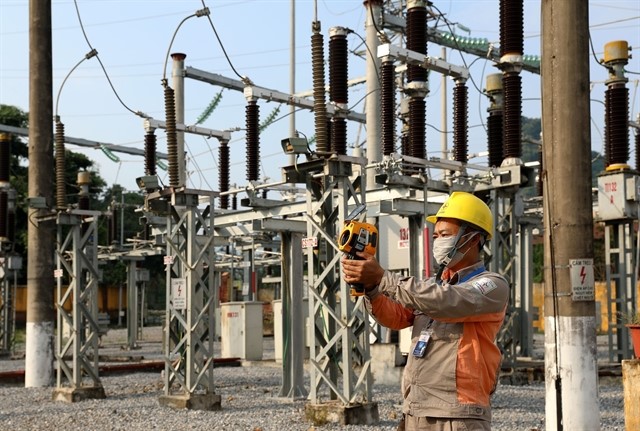The electricity sector is currently entering its peak and most challenging period of the year in terms of power supply due to the dry season.

Investment flows are expected to return to stocks in the electricity sector as demand for electricity is going to soar in the summer, said experts.
Capital inflows reached or neared their peak levels in industries such as banking, securities, steel, food, retail, software, warehousing and logistic maintenance since the beginning of this year, according to FiinGroup’s statistics. In contrast, the capital flow in the electricity sector has experienced a decline.
Stocks in the electricity sector have seemingly been overlooked by investors recently. This is because of their defensive nature, relatively low and stable return on investment, which makes them less appealing compared to other industries during a market uptrend.
However, there are expectations these stocks will gain momentum and attract more attention in the second quarter.
The stocks in the electricity sector have gained momentum since April 2 as several power generation companies such as PetroVietnam Power Corporation (POW), Bamboo Capital Group JSC (BCG), PetroVietnam Power Nhơn Trạch 2 JSC (NT2), Gia Lai Electricity JSC (GEG) and construction companies like PC1 Group JSC (PC1) and Power Engineering Consulting JSC 2 (TV2) witnessed higher prices and rising liquidity.
The gains were sparked by the approval of the Power Development Plan VIII on April 1 by Deputy Prime Minister Trần Hồng Hà. The plan aims to transition from conventional power sources like coal fueled electricity to cleaner alternatives such as LNG, onshore and offshore wind power, and solar power.
A few days ago, Vietnam Electricity (EVN) also passed a new mechanism to adjust retail electricity prices every three months instead of every six months as before.
This change is expected to allow the company to potentially increase electricity prices by around 5 per cent until the end of the year, contributing to the short-term improvement of its financial health.
MB Securities Company believes that this new mechanism will positively impact the value chain of the electricity industry, particularly as EVN plays a crucial role as the main buyer and seller of electricity.
The increase in electricity prices will provide EVN with the capability to fulfil payment obligations to power generation plants.
As a result, thermal power plants, such as POW, Power Generation 3 (PGV), NT2 and Quảng Ninh Thermal Power (QTP), are experiencing a notable rise in accounts receivable for electricity and the higher ratio of accounts receivable to total assets is expected to ease their financial pressure.
The electricity sector is currently entering its peak and most challenging period of the year in terms of power supply due to the dry season.
In March, the total electricity production across the entire system reached 25.7 billion kWh, marking a 9.8 per cent increase from last year. This brings the total electricity production for the first quarter of this year to 69.4 billion kWh, up 11.8 per cent.
EVN anticipates an average daily electricity consumption of 865.7 million kWh in April, reflecting a 10 per cent rise year-on-year.
These developments, coupled with the approval of the Power Development Plan VIII and the implementation of the new electricity price adjustment mechanism, are positive factors for the electricity sector after a quiet period.
The cash flow in the stock market tends to adjust after a period of reaching its peak, forming intermediate or long-term bottoms within a span of 3-6 months.
Đỗ Hồng Vân, head of Data Analysis at FiinGroup, said recent leading sectors in the market, including banking, securities and steel, are seeing money flow peaking and signs of declining. Meanwhile, the electricity industry is maintaining a low proportion of trading value, almost resembling the bottom level of the past year.
With the market's cyclical nature of cash flow and the positive signals evolving the power industry, the market’s attention is going to shift to electric stocks, Vân added. — VNS





